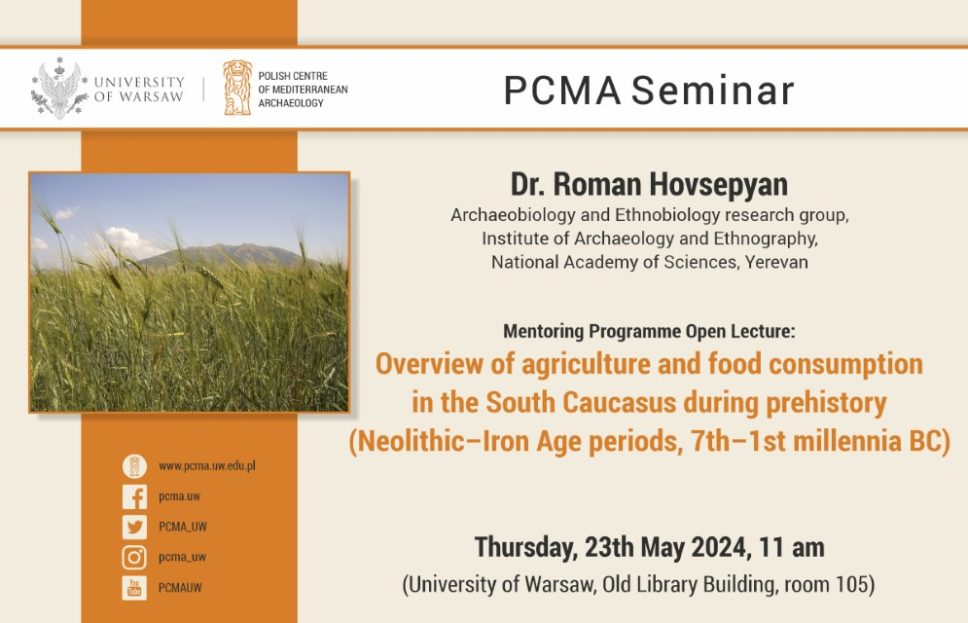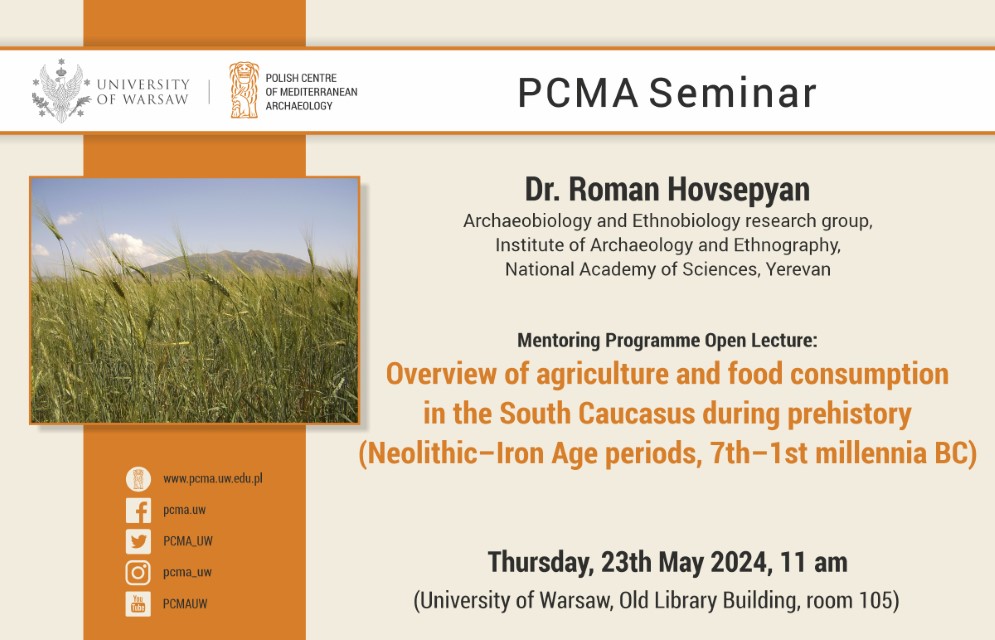The Polish Centre of Mediterranean Archaeology of the University of Warsaw will host Dr. Roman Hovsepyan, an archaeobotanist and ethnobotanist from the Armenian Academy of Sciences. His visit in Poland is part of the Excellence Initiative–Research University “Mentoring Programme”. During his stay, Dr. Hovsepyan will give an open lecture at the University of Warsaw.
Dr. Roman Hovsepyan is an archaeobotanist and ethnobotanist from Armenia. Currently, he is the head of the Archaeobiology and Ethnobiology research group at the Institute of Archaeology and Ethnography, National Academy of Sciences, in Yerevan. Dr. Hovsepyan’s main research interests are economies and environments of the South Caucasus, Near East and South-Eastern Europe in the past and the use of wild plants by Armenians, Yezidis, Kurds and Molokans (Caucasian Russians).
Open lecture: “Overview of agriculture and food consumption in the South Caucasus during prehistory (Neolithic–Iron Age periods, 7th–1st millennia BC)” will be held at the Old Library Building, University of Warsaw, room 105 at 11.00 a.m.
Abstract: “Agriculture has had its ups and downs in the prehistory of the South Caucasus. In the beginning, upon its establishment in the 6th millennium B.C., the Late Neolithic period, it was diverse involving the cultivation of various cereals, pulses, and oil plants. The situation started to change in the Chalcolithic period and, starting from the Early Bronze Age period (the Kura-Araxes culture), agriculture depending almost exclusively on cereal cultivation was practiced in the South Caucasus. This “cerealized” agriculture continued for more than two and a half millennia (from the Early Bronze Age to the Early Iron Age). Then, in the Middle Iron Age, agriculture again became diverse in the South Caucasus.
Global environmental changes at the beginning of the Early Bronze Age may have contributed to transforming the agriculture of the South Caucasus into the cultivation of a few hardy cereals. However, it seems more likely that anthropogenic factors played a decisive role, because pulses and oil-plants could have been grown along with cereals in the same conditions in foothills and plains, but they were not.”
After the lecture, a Polish-Armenian workshop on pottery production, distribution and use during the Iron Age in Armenia will be held at the same venue.
The objective of Action I.1.1/IV.1.1 “Mentoring Programme” is to provide opportunities for researchers from the University of Warsaw to join teams who are implementing ground-breaking projects by enabling the formation of an international network of contacts with scientists from universities from other countries, including outstanding researchers of worldwide renown.


